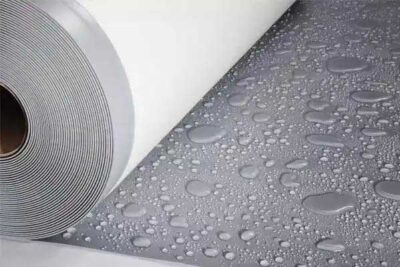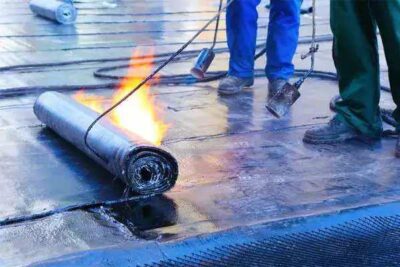
Contents
Foundation waterproofing refers to waterproofing applied below ground level in contact with a building or structure. Foundation waterproofing is defined as the treatment of a surface or structure to prevent the passage of water under hydrostatic pressure. By putting these pieces together, we can better visualize and understand what we are focusing on, which renders the underground part of these structures the way the space was designed. Foundations are very strong when first installed, but over time they weaken when set on the ground without proper drainage and protection.
Its foundation and structural integrity are at the heart of a building and when compromised, the value of this property is greatly depreciated. Each problem is evaluated to see what would be the best solution. Often, addressing such problems in the early stages produces the best results and can save on further damage.
- One of them is the Hydrostatic Pressure accumulating outside the foundation walls. Water is also very abrasive and can weaken the foundations by wetting the soil they sit on. When this happens, the base can collapse, crack and cause the walls to crack and warp. Hydrostatic pressure creates two types of challenges:
- It puts additional loads on structural members.
- Foundation waterproofing becomes more difficult as pressure tends to force water into any cracks or defects in the structure.
- Capillary action is the second environmental force you should be aware of. Capillary action, sometimes referred to as “wicking,” refers to the ability of water to flow in tight spaces due to hydrostatic pressure, without the aid of gravity and from the opposite direction.
- Another problem for foundations is corrosion from acidic soils acting against the lime base that holds the concrete together. The more “Flowers” you see (white powdery substance), the weaker the structure becomes, making it vulnerable to cracking.
- Another issue is the expansion and contraction of clay soil. When clay is wet and saturated, it can expand up to 20 times its size, putting tremendous pressure on the foundation walls. When it dries, it shrinks and pulls away from the walls. Over time, the fourth fixed foundation weakens its walls. Remember that your foundation walls support the entire house.
- We also encounter a freeze/thaw cycle based on our geographic location. Therefore, wet soil expands. Many foundations typically crack about 60-75 cm from the foundation level where the frost line is located. Block foundations are the most commonly constructed and have different weak areas. These are – mortar joints, a cold joint wherever blocks come together, a weak spot, and the center of the wall of any length, the farther from the corners the weaker the wall becomes.
- There are many methods to prevent water and moisture from coming into contact with a foundation. Tar can be used as a coating that acts as just a simple moisture proofer with a minimal building code requirement. So it is economical. A waterproofing system that completely covers the foundation is recommended for all new and existing foundations we offer. ( Bundling method )
Foundation waterproofing protects your structure and its assets against harmful humidity, dampness and flooding. While foundation waterproofing systems are a small fraction of the cost of an overall building project, remediation costs can be enormous if the wrong solution is chosen or applied incorrectly.
Foundation Waterproofing and Drainage
In most areas, building codes require at least a moisture barrier coating for below-grade structures, but a more durable waterproofing coating is generally less costly and provides more protection. Depending on the site’s water table and the potential for water under pressure (hydrostatic pressure) code, a waterproofing system with adequate drainage may be required to divert water away from the foundation.
A properly drained foundation greatly reduces hydrostatic pressure, allowing water to go somewhere instead of being pressed into your foundation walls. Since the aggregate can become clogged with dirt, a more modern solution is to apply a dimpled drainage board to the foundation walls after the walls have been waterproofed with a sheet membrane or a coating. The dimples in this drainage plate provide space between the soil and the structure where water can flow into a drain at the bottom of the foundation.
Filter fabrics are generally used on the drainage board to prevent dirt and sediment from clogging the drainage channels. Because the hydrostatic pressure is interrupted by the empty space created by the drainage slab, the water goes down a drainage system at the bottom of the foundation that carries the water to a sump system, municipal drain, or other location from the structure.
Installation of Internal and External Drainage Systems
Proper drainage systems provide better control over water, even when water has entered the house. Using a sump pump to collect and drain water from areas below the foundation is one of the simplest ways to increase drainage. Still, you want to make sure you keep the water away from the house.
Internal drainage systems serve to drain groundwater from areas below the foundation and water collected along the foundation. While some homeowners underestimate the function of an interior drainage system, these systems can provide extensive benefits when there is a power outage, heavy rain, or heavy snowmelt. In addition to keeping the area free of both mold and dampness, proper drainage is effective at keeping water out of the house.
The Importance of Foundation Waterproofing
Wet soil under a foundation can slide from loss of strength or swelling. Maintaining a dry foundation is important because this change is known to have a negative impact on structural integrity. Humidity is also a problem as it provides an ideal environment for mold growth. Rather than harming underground spaces, mold can be harmful to health. Unfortunately, conventional concrete is not waterproof and although it can keep liquid water out when it is not cracked, water vapor easily penetrates. Therefore, preventing water from passing through the concrete and allowing it to flow out of the foundation is crucial for structural integrity.
Depending on factors such as climate, soil or water table conditions, geographic location, topography, and depth of foundation, the task of installing proper drainage to guarantee dry subgrade voids can be relatively simple. Systems designed to keep water out will consist of three key components, which are:
- Channels used to divert water away from the bottom of the foundation.
- Water evacuation application designed to direct water downstream and into sewers, helping to ensure that moisture does not pass through the wall.
- Floor surface treatment that is installed adjacent to the building water and helps divert surface water.
In order to ensure the durability of your structure and the protection of your home against water and moisture, foundation waterproofing becomes a very important step to extend the life of concrete. In fact, the water-repellent membrane (or any other method chosen from the ones we present below) blocks natural soil moisture that can degrade the condition of the concrete over time. This prevents permanent moisture problems or even water infiltration in the basement.
Knowing that the soil around your home naturally contains water and moisture, it should also properly drain water from precipitation, snowmelt, roof leaks, or grass and blooms. It is also possible that your home is located in a floodplain or in groundwater that rises to the ground, especially during the spring and autumn months. This increases the hydrostatic pressure at the base of the foundation, which can cause water infiltration and even structural problems such as cracks. Conclusion; One of the homeowners’ worst nightmares: a flooded basement. Therefore, you must protect your foundation according to the characteristics of your property in order to keep your house dry and prevent water from leaking in and creating moisture.
Foundation Waterproofing Options
- Drainage Board: Creates a separation air gap between the wet landfill and the vertical foundation wall. It allows the water to flow freely into the drainage channel.
Tar: This method involves applying a layer of tar that adheres to the concrete to seal cracks and holes. Waterproof and durable tar prevents the passage of water and keeps the foundations dry. - Waterproofing Membrane: This option provides air and waterproof protection against water and moisture.
- Liquid Membrane: In this case, a layer of liquid product is applied, which then hardens as a result of the reaction with the moisture in the air. Liquid waterproofing membrane is a waterproofing material that becomes homogeneous and solid and has a rubber-like texture. This is a flexible and fast drying technique.
- Elastomeric Waterproofing Membrane: This is a strong, self-adhesive material that seals the foundation and protects it from the elements. Keep in mind that maintenance is required to optimize results over time.
In short, foundation waterproofing is an often neglected step in building a home. But only waterproofing can effectively protect your foundation from water and moisture seepage. This will allow your foundation to better resist cracking and damage over time. After all, you’re protecting the health of your home and family… It’s an investment that pays off!







